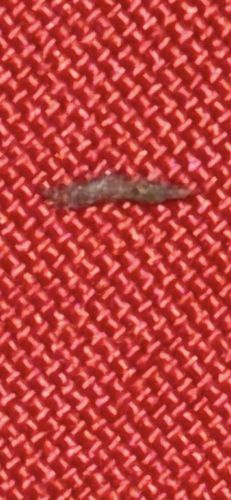Case-bearing Clothes Moth larva
Scientific Name: Tinea pellionella
Order & Family: Lepidoptera (moths and butterflies), Tineidae (fungus moths and clothes moths)
Size: Larvae are typically around 10-14 mm in length. Adults are about 6-8 mm long with a wingspan of 9-16 mm.

Natural Habitat
Indoors, particularly in dark, undisturbed areas like closets, attics, and storage areas. They prefer natural fibers like wool, fur, silk, felt, and feathers.
Diet & Feeding
The larvae feed on keratin-containing materials such as wool, fur, silk, felt, feathers, and sometimes synthetic blends if mixed with natural fibers. They can also feed on dried animal remains.
Behavior Patterns
The most distinctive behavior is the construction of a portable silken case by the larva, which it carries everywhere. The larva enlarges this case as it grows and pupates inside it. Adults are poor flyers and prefer to crawl or make short flights, often avoiding light.
Risks & Benefits
Potential risks include significant damage to textiles, clothing, carpets, and upholstered furniture made from natural fibers. They do not pose direct health risks to humans. There are no known direct benefits, as they are considered household pests.
Identified on: 9/11/2025